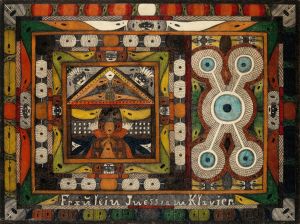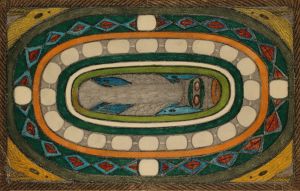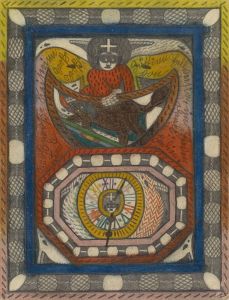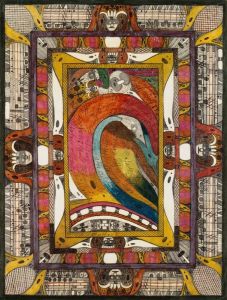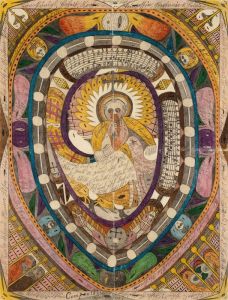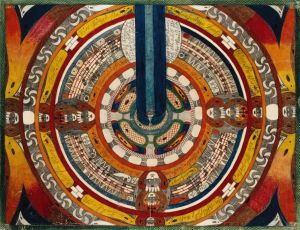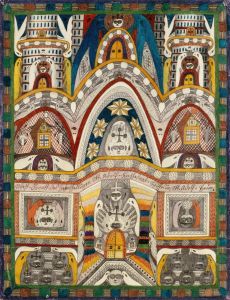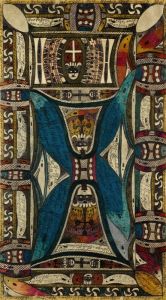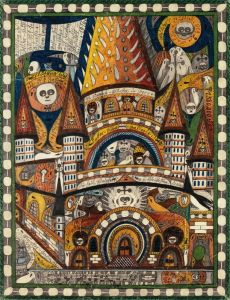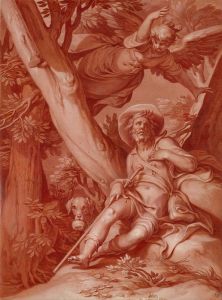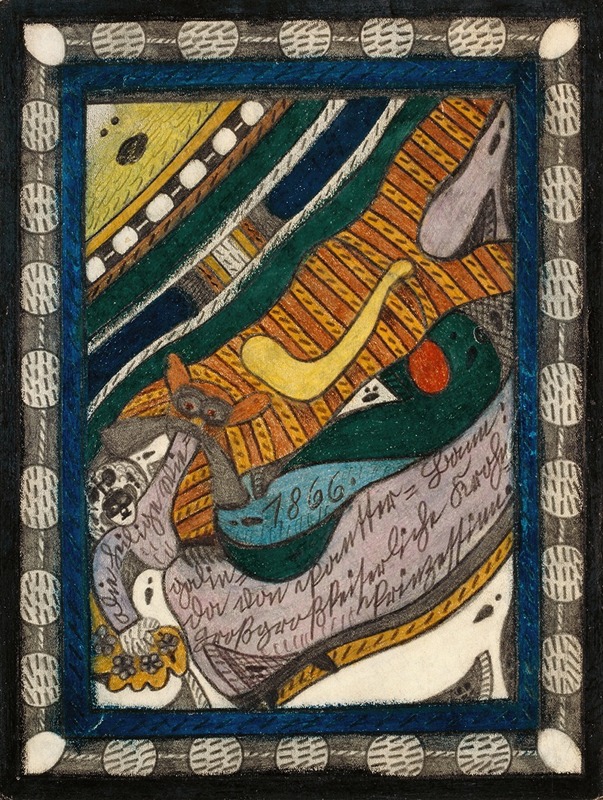
Die heilige Wiegalinda von Pantter=Bann
A hand-painted replica of Adolf Wölfli’s masterpiece Die heilige Wiegalinda von Pantter=Bann, meticulously crafted by professional artists to capture the true essence of the original. Each piece is created with museum-quality canvas and rare mineral pigments, carefully painted by experienced artists with delicate brushstrokes and rich, layered colors to perfectly recreate the texture of the original artwork. Unlike machine-printed reproductions, this hand-painted version brings the painting to life, infused with the artist’s emotions and skill in every stroke. Whether for personal collection or home decoration, it instantly elevates the artistic atmosphere of any space.
Adolf Wölfli (1864-1930) was a Swiss artist known for his intricate and detailed works that often combined visual art with musical and literary elements. He is considered one of the most significant figures in the field of Art Brut, or outsider art, a term coined by French artist Jean Dubuffet to describe art created outside the boundaries of official culture, particularly by psychiatric patients.
One of Wölfli's notable works is "Die heilige Wiegalinda von Pantter=Bann." This piece is part of his extensive and elaborate oeuvre, which he created during his long-term stay at the Waldau Clinic, a psychiatric hospital in Bern, Switzerland. Wölfli was institutionalized in 1895 after being diagnosed with schizophrenia, and it was during his time at the clinic that he began to produce his prolific body of work.
"Die heilige Wiegalinda von Pantter=Bann" exemplifies Wölfli's unique style, characterized by dense, intricate patterns, and a blend of fantastical imagery with autobiographical elements. His works often feature complex compositions filled with symbolic references, text, and musical notations. Wölfli's art is known for its meticulous detail and the use of vibrant colors, creating a sense of both chaos and order.
Wölfli's creative process was highly structured. He would often start with a central image and then build around it, filling the entire surface of the paper with his elaborate designs. His works were not just visual pieces but also included written narratives and musical scores, reflecting his multifaceted artistic vision. Wölfli's art was a means of creating an alternative reality, a way for him to cope with his mental illness and the confines of the psychiatric institution.
"Die heilige Wiegalinda von Pantter=Bann" is a testament to Wölfli's ability to transform his inner turmoil into a rich and imaginative world. The title itself suggests a blend of religious and fantastical elements, typical of Wölfli's work, which often drew on a wide range of influences, from biblical stories to his own invented mythology.
Wölfli's work remained relatively unknown during his lifetime, but it gained recognition posthumously, particularly through the efforts of psychiatrist Walter Morgenthaler, who published a monograph on Wölfli in 1921 titled "Ein Geisteskranker als Künstler" ("A Psychiatric Patient as Artist"). This publication was instrumental in bringing Wölfli's work to the attention of the art world and establishing his legacy as a pioneering figure in outsider art.
Today, Wölfli's works are held in high regard and are part of major art collections, including the Adolf Wölfli Foundation at the Museum of Fine Arts in Bern, Switzerland. His art continues to be studied and appreciated for its originality, complexity, and the insight it provides into the mind of a profoundly creative individual living with mental illness.






